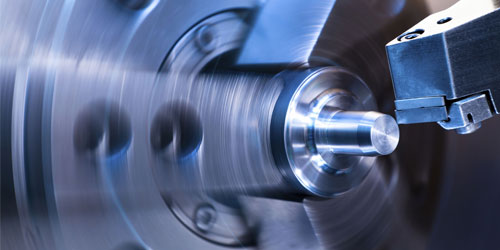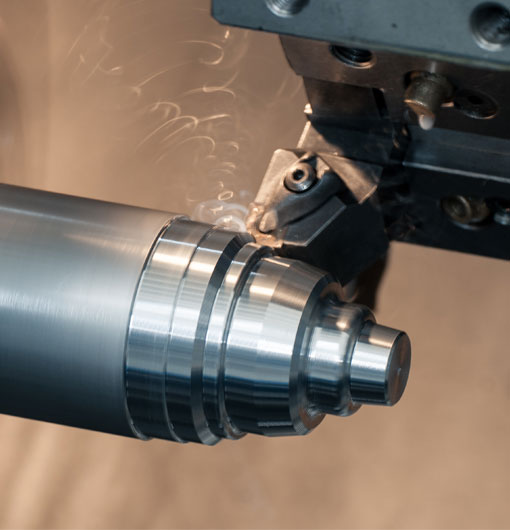When it comes to the world of manufacturing and metalworking, Computer Numerical Control (CNC) metal turning is an essential skill to master. With the right knowledge and tools, you can achieve highly precise results and a highly efficient production process. In this article, we will take a deep dive into the art of CNC metal turning, exploring various aspects of this technique, including the types of machines and tools used, as well as tips and tricks to optimize the process.
Understanding CNC Metal Turning
CNC metal turning is a subtractive manufacturing process wherein a cylindrical workpiece is rotated while a cutting tool removes material in the form of chips. This process can be used to produce a variety of shapes and intricate designs in metal components, ranging from simple cylindrical objects to more complex and contoured forms.
There are several key elements involved in the CNC metal turning process, such as:
The workpiece: A cylindrical metal blank that serves as the base material for the turning process.
The cutting tool: A sharp, multi-point cutting tool designed to remove material from the workpiece.
The machine: A CNC lathe, which is a computer-controlled machine that automates the metal turning process.
Types of CNC Lathes
CNC lathes come in various shapes and sizes, offering a range of capabilities to meet specific part requirements. The most common types of CNC lathes include:
1. Flatbed Lathes: These are the most basic form of CNC lathes, featuring a spinning workpiece and a stationary cutting tool mounted on a flat bed. They are often used for simple turning operations and can handle medium-sized workpieces.
2. Slant Bed Lathes: As the name suggests, these lathes have a bed oriented at an angle, typically between 30 and 45 degrees. Slant bed lathes offer improved chip flow and increased rigidity, making them suitable for high-speed turning and heavy-duty operations.
3. Swiss-Type Lathes: These lathes are known for their precision and ability to handle small, complex parts. Swiss-type lathes feature a unique sliding headstock design, where the cutting tool moves in and out relative to the workpiece, maximizing accuracy and eliminating the need for secondary operations.
4. Vertical Lathes: Unlike their horizontal counterparts, vertical lathes have a vertically-oriented spindle, offering advantages when working with large, heavy workpieces. Vertical lathes are ideal when working with large-diameter, tall, or heavy parts that may be challenging to mount and work on using a horizontal lathe.
5. Multi-Axis Lathes: These advanced lathes offer multiple axes of motion, allowing for simultaneous machining operations and reducing setup times. Multi-axis lathes are ideal for complex parts that require milling, drilling, or tapping in a single setup, enhancing both efficiency and accuracy.
Selecting the Right Cutting Tools
Choosing the appropriate cutting tool is critical for achieving the desired results in CNC metal turning. Some of the most common cutting tools used in metal turning operations include:
High-speed steel (HSS): HSS cutting tools are cost-effective and offer enhanced heat resistance, making them suitable for a variety of low to medium-speed turning operations.
Carbide: Carbide cutting tools provide higher wear resistance and increased cutting speeds, making them ideal for more demanding turning applications.
Ceramic: Ceramic cutting tools offer exceptional wear resistance and high-speed capabilities, though they are more brittle than carbide tools and may not be suitable for all applications.
Polycrystalline Diamond (PCD): PCD cutting tools are an excellent choice for non-ferrous metals and ultra-high-speed cutting operations, offering excellent wear resistance and long tool life.
Tips for Optimizing CNC Metal Turning
To improve the efficiency and accuracy of your CNC metal turning operations, consider the following tips:
1. Properly align your cutting tools: Ensure the height and angle of your cutting tool are set correctly for optimal chip formation and to reduce the risk of chatter and tool deflection.
2. Choose the right cutting parameters: Selecting the appropriate speed, feed, and depth of cut is crucial to achieving the desired results while maximizing tool life and machine performance.
3. Use coolant effectively: Properly administering coolant can help to control heat generation, improve surface finishes, and extend tool life.
4. Maintain machine cleanliness and organization: A clean, well-organized machine area can help reduce setup times, prevent accidents, and improve overall efficiency.
5. Keep up with preventative maintenance: Regularly inspecting, cleaning, and maintaining your CNC lathe can help to prevent unexpected downtime and extend the life of your machine.
Exploring Advanced Techniques and Applications
As you grow more comfortable with CNC metal turning, you may begin exploring more advanced techniques and applications, such as:
Live tooling: Incorporating live tooling into your CNC lathe setup allows for milling, drilling, and tapping operations to be performed in tandem with turning, reducing setup times and increasing efficiency.
Tailstock operations: Using a tailstock can help support long or slender workpieces, provide additional rigidity during turning operations, and even enable machining operations such as drilling or reaming.
Automation and robotics: Implementing automation and robotic solutions can help further optimize your CNC metal turning process by reducing labor costs, increasing throughput, and minimizing human error.
CNC metal turning provides manufacturers with a plethora of opportunities to create intricate and complex parts, while also delivering precision and efficiency. By understanding the various types of CNC lathes, selecting the appropriate cutting tools, and following best practices, you can master the art of CNC metal turning and unlock its full potential.
cnc metal turning













